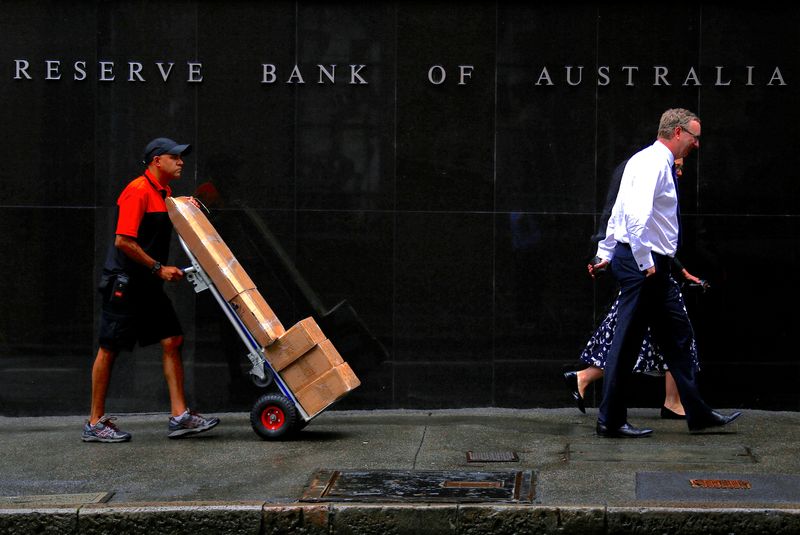Who is Kevin Hassett? Wolfe looks at the Trump ally tipped to become Fed Chair.
By Stella Qiu and Wayne Cole
SYDNEY (Reuters) -Australia's central bank held interest rates steady on Tuesday but cautioned that a further increase could not be ruled out given inflation was still too high, a strong signal that it isn't in a hurry to start easing policy anytime soon.
The relatively hawkish tone of the central bank's statement boosted the Australian dollar and saw futures push out the likely timing of a first easing to September from August..
Wrapping up its first policy meeting of the year, the Reserve Bank of Australia (RBA) kept rates at a 12-year high of 4.35%, but left the door open to another rise if needed.
Markets had wagered heavily on a steady outcome given inflation had eased by more than expected in the fourth quarter, but the RBA statement indicated it was still not confident that inflation was on a sustainable path towards its 2%-3% target.
"While recent data indicate that inflation is easing, it remains high... The Board needs to be confident that inflation is moving sustainably towards the target range," said the RBA Board in a statement.
The central bank did trim its forecasts for inflation and economic growth but emphasised demand was still running ahead of supply, suggesting it would be in no rush to cut rates.
The Australian dollar rose 0.4% to $0.6512, having hit an 11-week low of $0.6469 overnight. Three-year bond futures were down 5 ticks to 96.3 and markets moved to price in the first cut will come in September, from August before the RBA statement.
RATE RISKS BALANCED
The RBA has jacked up interest rates by 425 basis points since May 2022 to tame stubbornly high inflation. While inflation fell to a two-year low of 4.1% in the fourth quarter and some distance from the 2022 peak of 7.8%, it is still well above target.
All the same, the economy has slowed to a crawl, the red-hot labour market has started to loosen and consumer spending remained soft amid cost of living pressures and high mortgage rates.
RBA Governor Michele Bullock, in her first press conference under a new reporting system for the rate decision, said the bank's board needed to be convinced that inflation was moving sustainably to target before thinking about rate cuts.
"We haven't ruled anything out and we haven't ruled anything in... The optionality here really needs to be maintained because we need to be driven by the data."
CBA's head of Australian economics Gareth Aird said he does not expect the RBA to act on its hiking bias, tipping a first rate cut to come in September.
"It will take more than just weak economic growth for the RBA to entertain the idea of policy easing," he added.
"The unemployment rate will likely need to rise a little more quickly than the RBA anticipates and inflation will need to fall a little faster, and we expect both of those outcomes to transpire."
The RBA is following several other central banks in resisting pressure for early cuts. Economic resilience and hawkish Federal Reserve commentary have recently led investors to push back the start of U.S. easing from March to June.
"We doubt that the (RBA) Board are even thinking about rate cuts yet," said Luci Ellis, chief economist at Westpac and a former RBA official.
"We continue to expect the RBA to reach this level of comfort around September."
